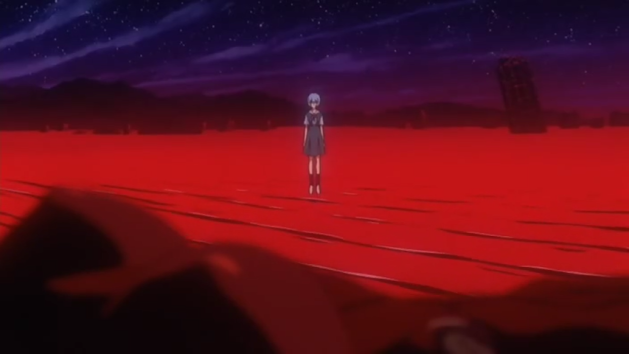Bubblegum Crisis is a cyberpunk Super Robot-ish anime about a team of female “mercenaries” (the mercenary ethic is hardly on display here) called the Knight Sabers. The original anime ran a truncated 8 episodes from 1987 — yes, before the release of Akira — to 1991, with a three-episode OVA released in 1991. After watching it I believe it is underrated as an influence on cyberpunk aesthetics — neatly bridging the relentlessly gritty Blade Runner and Neuromancer with the more rounded views of 1990s-2000s “post-cyberpunk” like Islands in the Net or, of course, Ghost in the Shell. There was a full 26-episode reboot in 1998 which I haven’t seen and don’t intend to watch. Bubblegum Crisis consistently chooses style over substance, which I think suits the aesthetics-first cyberpunk subgenre well. I liked it better than Ghost in the Shell, especially the tedious Stand Alone Complex.
In the near future, society makes extensive use of so-called Boomers, human-seeming androids which are basically a combination of the replicants from Blade Runner and the Terminator. The shadowy cyberpunk megacorporation that manufactures Boomers plans to foment an uprising and usher in a posthuman, Boomers-only future. Our heroes must figure out what’s going on and stop it!

The hell you say
Girls’ Room
All of the principal characters are women, with male characters firmly relegated to various supporting roles. What I found interesting was that this didn’t involve female characters taking on “masculine” roles or vice versa. For instance the “mama bear” character, Sylia, has her own womens’ fashion line, which presumably provided the startup capital for the Knight Sabers. Meanwhile the hyper-macho cop Leon, who acts the Commissioner Gordon to the Knight Sabers’ Batman, does what he can and isn’t bothered at all when the obviously-feminine Knights save the day.


A cyberpunk powersuit-mecha series obviously isn’t targeted at a female audience, and there is some fan service (which thankfully gets toned down as the series progresses). Sylia, who is in her late 20s, is in typical Japanese fashion portrayed as practically an old maid.

I do prefer the straightforward portrayal of the girls in Bubblegum Crisis to, in particular, Motoko Kusanagi, the protagonist of Ghost in the Shell. Kusanagi is a cyborg — her physical appearance is, in theory, a deliberate choice on her part. The original Ghost in the Shell movie plays a little bit with the idea that Kusanagi isn’t a proper female, but this is abandoned in the Stand Alone Complex series. So why did she decide to slap such a big ol’ pair on her custom-built body, which at least in the movie is actually government-issued equipment? Does she keep something important in there? Are they purely recreational? Public relations? These rather interesting questions are ignored and in all likelihood the studio thought it would look good to their audience. While I’m sure this was also the case in Bubblegum Crisis, the characters are just normal attractive young women whose existence doesn’t raise any awkward questions of the nature of their own embodied existence.
Rushed Production
As often happens with anime, the series’ production was a seat-of-the-pants operation and the studio clearly had only a general idea of what was going to happen when the first frame was drawn. Several episodes intended for plot and character development are obviously missing between the 8-episode initial run and the 3-episode conclusion OVA. The anime never quite figures out which of two characters (Sylia & Priss) is the protagonist and doesn’t have enough room to give both stories full treatment. Still, this was never going to be a series that required or rewarded careful thinking about what’s going on.
Style over Substance
Ridley Scott’s Blade Runner is the main influence on Bubblegum Crisis with several explicit references, although the Boomers who feature so prominently in the series are obviously based on The Terminator and Crisis straightforwardly adopts a contemporary 1980s style by default rather than attempting to construct every detail of the future from scratch.
Because of the series’ length, we get a more top-to-bottom tour of 2033 Tokyo than we do of Blade Runner‘s Los Angeles, seeing both the grime and the glister. The overall impression is of a somewhat more realistic environment than Blade Runner or Neuromancer’s relentlessly downbeat view of the future. There are good parts of the city as well as bad parts — and things could get better or worse.
While there’s a certain lack of coherence over the arc of the series, the individual episodes are well-directed.
Bubblegum Crisis is pretty much pure entertainment with some nice-to-look at scenery. If you liked Ghost in the Shell‘s setting but not its pretensions (or you could do without them), this one is worth looking at.





